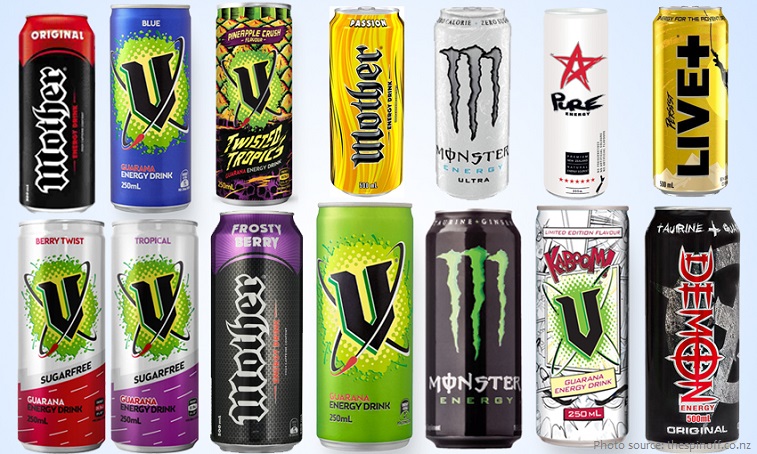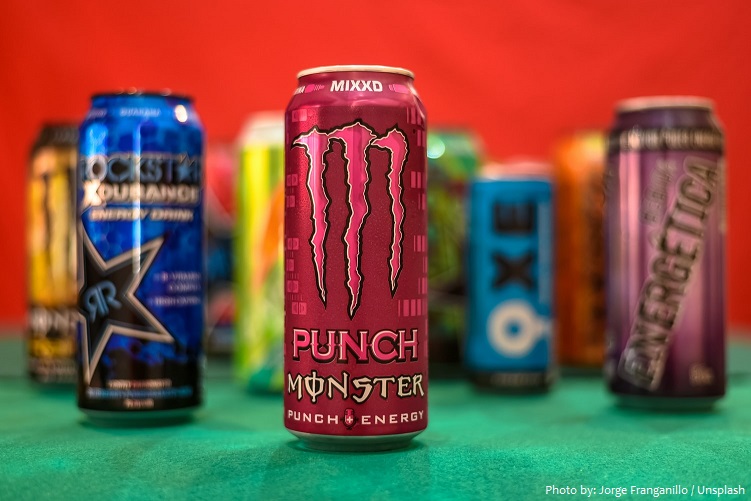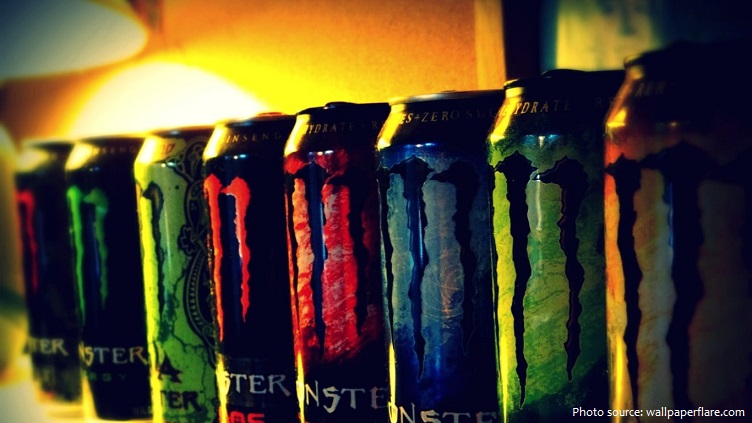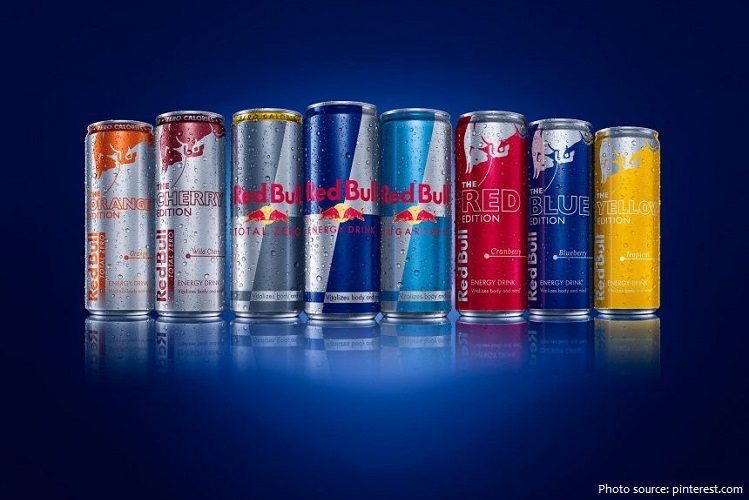
An energy drink is any beverage that contains high levels of a stimulant ingredient, usually caffeine, as well as sugar and often supplements, such as vitamins or carnitine, and that is promoted as a product capable of enhancing mental alertness and physical performance.
Energy drinks are distinguished from sports drinks, which are used to replace water and electrolytes during or after physical activity, and from coffee and tea, which are brewed, contain fewer ingredients, and may be decaffeinated.
Energy drinks also differ from soft drinks, which either do not contain caffeine or contain relatively small amounts of caffeine. Although some energy drinks are considered beverages, others, namely those containing food additives (e.g., taurine or other amino acids), may be marketed as dietary supplements. Examples of energy drinks include Red Bull, Monster, Rockstar, NOS, and Amp.

A typical energy drink may contain the following: carbonated water, around 40 grams of sugar (from sucrose and/or glucose), 160 mg or more of caffeine, artificial sweetener, and herbs/substances associated with mental alertness and performance but that lack scientific evidence with controlled trials (taurine, panax ginseng root extract, L-carnitine, L-tartarate, guarana seed extract, B vitamins).
Advertising for energy drinks usually features increased muscle strength and endurance, but there is no scientific consensus to support these claims.
Energy drinks have been associated with many health risks, such as an increased rate of injury when usage is combined with alcohol, and excessive or repeated consumption can lead to cardiac and psychiatric conditions. Populations at risk for complications from energy drink consumption include youth, caffeine-naïve or caffeine-sensitive, pregnant, competitive athletes and people with underlying cardiovascular disease.

The energy drink, as we know it, started in Japan. In the postwar period, amphetamines were very popular until laws were passed to curb their use in the 1950s. Then in 1962, a company called Taisho introduced Lipovitan D — a legal, energizing tonic sold in minibar-size bottles. By the 1980s, such vitamin-fortified, extra-caffeinated beverages were being regularly consumed by Japanese executives struggling to get ahead.
It took a while for this sort of stimulation in a can to catch on in America. There was cocaine in Coca-Cola at one point, but that didn’t last long. In 1949, a chemist from Chicago invented Dr. Enuf, a caffeinated soft drink made with vitamins. Early advertisements called his drink “the answer to a housewife’s prayer, the bosom companion of a tired farmer or businessman and a shift into high gear for young Johnny or Mary.”
Energy drinks got their huge international break when Austrian businessman Dietrich Mateschiz visited Bangkok and ‘discovered’ these energizing tonics. He was simply amazed by the tonics’ effects and partnered with the producers of Krating Daeng in 1984 to bring the brand to global audiences.

Krating Daeng changed its name to Red Bull and took Europe by storm. The combination of caffeine, taurine, and carbonation made Red Bull an overnight sensation. In 1997 Mateschiz introduced his baby to the United States, and the energy drink market as we know today was born.
UK supermarkets have launched their own brands of energy drinks, sold at lower prices than the major soft drink manufacturers, that are mostly produced by Canadian beverage maker Cott. Tesco supermarkets sell “Kx” (formerly known as “Kick”), Sainsbury’s sell “Blue Bolt” and Asda sell “Blue Charge”—all three drinks are sold in 250-milliliter cans and 1-liter bottles—while Morrison’s sell “Source” in 250-milliliter cans. Cott sells a variety of other branded energy drinks to independent retailers in various containers.
By the beginning of the 2000s, energy drinks are everywhere. Brands start popping up left and right, and everyone has a preference. In 2001, Rockstar is introduced, followed by Monster Energy in 2002, Pimp Juice by Nelly in 2003, Rip It in 2004.

Since 2002, there has been a growing trend for packaging energy drinks in bigger cans. In many countries, including the US and Canada, there is a limitation on the maximum caffeine per serving in energy drinks, so manufacturers include a greater amount of caffeine by including multiple servings per container.
Energy shots are a specialized kind of energy drink. Whereas most energy drinks are sold in cans or bottles, energy shots are usually sold in smaller 50ml bottles.
Energy drinks are also popular as drink mixers—Red Bull and vodka is a popular combination. In the US, a product called “Four Loko” formerly mixed beer with caffeine, while Kahlua is a coffee-flavored alcoholic drink.
Energy drinks with nicotine are marketed as nicotine replacement therapy products.
Globally, energy drinks are typically attractive to youths and young adults. One study revealed that the amount of caffeine being consumed was 227 milligrams per day among young adults ages 20 through 39, compared to their non-consumer counterparts, who only consumed about 52.1 milligrams of caffeine per day.
On 14 August 2012, the word “energy drink” was listed for the first time in the Merriam-Webster’s Collegiate Dictionary.
